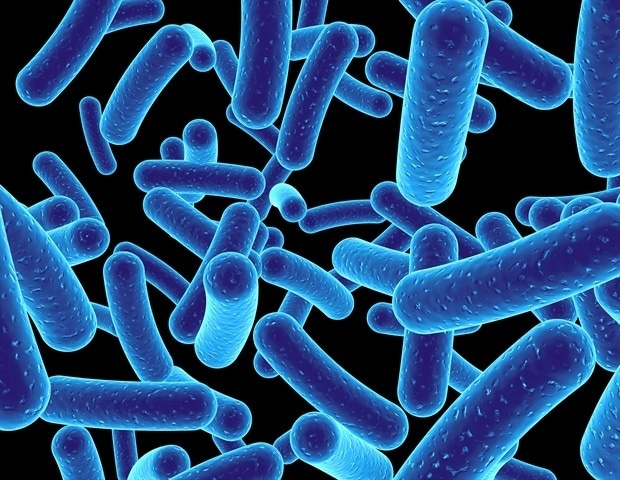An international team of researchers has identified specific bacteria in the gut that cause both mice and humans to develop food addictions that lead to obesity, and also identified bacteria that play a beneficial role in preventing food addiction.
The study was presented today (Thursday) at the Federation of European Neuroscience Societies (FENS) Forum 2024 and simultaneously published in the journal Gut.
Professor Elena Martín-Garcia, from the Institute of Neuropharmacology and Neuropherics, School of Medicine and Life Sciences, Pompeu Fabra University, Barcelona, Spain, told the FENS Forum: “Food addiction is multifactorial. It is characterised by a loss of control over food intake and is associated with obesity, other eating disorders and altered composition of the gut microbiome. Until now, the mechanisms underlying this behavioural disorder were poorly understood.”
Speaking at the FENS Forum, Professor Rafael Maldonado, director of the institute, said: “Our findings may allow us to identify new biomarkers for food addiction and, most importantly, to evaluate whether beneficial bacteria can be used as a new treatment for obesity-related behaviors, for which there are currently no effective treatments. Possible new treatments could involve the use of beneficial bacteria and dietary supplementation.”
Professor Martín García used the Yale Food Addiction Scale (YFAS 2.0) to diagnose food addiction in mice and humans. This scale includes 35 questions to be answered by humans and, in mice, can also be categorized into three criteria: persistent food seeking, strong motivation to obtain food, and compulsive behavior.
She and her colleagues looked at the gut bacteria of food-addicted and non-addicted mice and found that the food-addicted mice had an increase in bacteria from the phylum Proteobacteria and a decrease in bacteria from the phylum Actinobacteria. These mice also had reduced abundance of another type of bacteria in the phylum Bacillota, called Blautia.
The researchers used YFAS to classify 88 patients into those with and without food addiction. Similar to the results in mice, food addiction patients had a decrease in Actinobacteria and Blautia, and an increase in Proteobacteria. Further analysis showed how the human results correlated with those in mice.
Findings from both mice and humans suggest that certain microbiota may play a protective role in preventing food addiction. In particular, the strong similarity in the amount of Blautia highlights the potential beneficial effects of this particular gut bacteria. We therefore investigated the protective effect of oral administration of lactulose and rhamnose, non-digestible carbohydrates known as “prebiotics” that can increase the amount of Blautia in the gut. When we did this in mice, we found that it increased the amount of Blautia in the mice’s feces and dramatically improved their food addiction. Similar improvements were seen when a species of Blautia, Blautia wexlerae, was orally administered to mice as a probiotic.
The characterization of the intestinal microbiota of mice and humans suggests a possible detrimental effect of bacteria belonging to the phylum Proteobacteria and a potential protective effect against the development of food addiction through an increase in Actinobacteria and Bacillus subtilis.
Professor Elena Martín-García, Institute of Neuropharmacology, Faculty of Medicine and Life Sciences, Pompeu Fabra University, Barcelona, Spain
Professor Martín-García says the results of this study show how gut bacteria can influence brain function and vice versa: “For the first time, we have demonstrated a direct interplay between gut composition and brain gene expression, shedding light on the complex, multifactorial origins of this important obesity-related behavioral disorder. Understanding the interplay between behavioral changes and gut bacteria is a step towards future treatments for food addiction and related eating disorders.”
She also described research investigating how microRNAs (miRNAs), small single-stranded molecules that control gene expression and contribute to nearly every cellular process, are involved in food addiction: changes in miRNA expression may be involved in the mechanisms underlying the disorder.
The researchers used a technique called Tough Decoy (TuD), which inhibits specific miRNAs in the medial prefrontal cortex (mPFC) of the mouse brain, a part of the brain involved in self-control and decision-making, to create mice that are prone to food addiction. These are the same mice used in the study mentioned above, the food-addicted mice.
They found that inhibiting miRNA-29c-3p promoted the persistence of the response and increased the vulnerability of the mice to developing food addiction, while inhibiting another miRNA, called miRNA-665-3p, promoted compulsive behavior and vulnerability to food addiction.
Professor Maldonado said: “These two miRNAs may act as protective factors against food addiction, which helps us understand the neurobiology of loss of feeding control, which plays a key role in obesity and related diseases. To further understand these mechanisms, we are currently investigating how the gut microbiota and miRNA expression in the brain interact in mice.”
Professor Richard Roche, Associate Head of Psychology at Maynooth University in Maynooth, County Kildare, Ireland, who is chair of the FENS communications committee and was not involved in the study, said: “Compulsive eating and food addiction are growing problems around the world. There are many factors that contribute to them, not least the environments in which people live and the availability of certain types of foods. However, we have known for some time that eating disorders probably have something to do with it, and research by Professor Martín García and colleagues has shown that different types of bacteria in the gut influence brain function, and vice versa, in both humans and mice. This understanding paves the way for the development of potential new treatments for eating disorders and we look forward to further research in this area.”
sauce:
Federation of European Neuroscience Societies
Journal References:
Samulėnaitė, S., et al. (2024). Gut microbiota signatures of vulnerability to food addiction in mice and humans. Gut. doi.org/10.1136/gutjnl-2023-331445.


